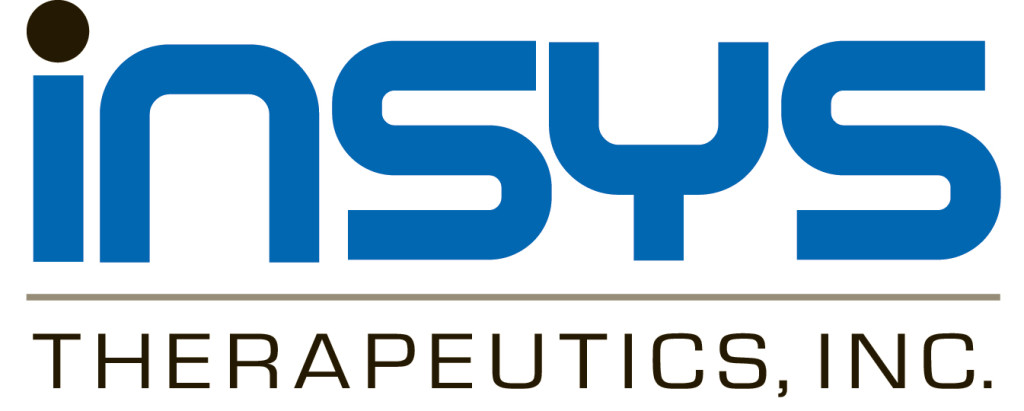Arizona Telemedicine Program Founding Director Dr. Ronald S. Weinstein Honored by the ‘Custodian’ of the Nation’s First Telemedicine Program, the Center for Connected HealthContinue reading
Category Archives: AZBio News
Cooper Tire Begins Testing Tires Made with Guayule Component
Cooper and Consortium Partners Update Progress on $6.9 Million Grant to Develop Guayule Polymer for Tire Applications
UofA breaks ground on 245K SF Biosciences Partnership Building

With a shovel of dirt, construction began Thursday on the 10-story Biosciences Partnership Building; the latest development in downtown Phoenix.
University of Arizona President Ann Weaver Hart and Phoenix Mayor Greg Stanton tilled the soil ceremoniously marking the beginning of the 2-year design and construction for the 245,000-square foot research building on the Phoenix Biomedical Campus.
“This building will foster collaborations with scientists that will lead to more cures, better treatments and bring more federal and private dollars to the state,” said President Hart. “We will pursue expanded partnerships with industry that we hope will lead to groundbreaking discoveries in the areas of neuroscience, cardiovascular and thoracic science. This building will allow us to further these efforts and, ultimately, improve lives.”
As announced earlier this year by the university and the City of Phoenix, plans are in place to construct the 10-story, 245,000-square-foot research building just north of the Health Sciences Education Building on the downtown campus.
“This building will serve the medical school and beyond with important research and faculty to teach the next generation of health professionals,” Stanton said. “Of course, this just adds to the economic vibrancy of downtown. The research facility initially will bring construction jobs, and then high-paying, research-related jobs, including specialized technicians and other support staff for faculty and scientists.”
The 2-year construction on the $136 million building is expected to translate into nearly 500 jobs initially and another 360 permanent jobs at build out.
“The Bioscience Partnership Building represents yet another milestone as the city and the university develop a major academic medical center in downtown Phoenix,” said Stuart D. Flynn, MD, dean of the University of Arizona College of Medicine – Phoenix. “Research in this building, in collaboration with our partners, will advance healthcare for all and expand our role as an economic driver for the city, valley, and state.”
The building is the latest development in the steady expansion of the downtown Phoenix Biomedical Campus and expanding academic medical center. In 2012, the award-winning Health Sciences Education Building opened, housing health education for both the UA and Northern Arizona University. Construction continues on The University of Arizona Cancer Center at Dignity Health St. Joseph’s. The cancer center, a 220,000-square foot outpatient and research facility, is scheduled to be completed in 2015.
The Phoenix Biomedical Campus plays host to four UA health science colleges – the Mel and Enid Zuckerman College of Public Health as well as the colleges of nursing and pharmacy. Also on campus are three NAU programs – physician’s assistant, physical therapy and occupational therapy as part of the university’s College of Health and Human Services. Arizona State University’s School of Nutrition and Health Innovation is housed in the Arizona Biomedical Collaborative 1 building just southwest of the education building and immediately south of the Translational Genomic Research Institute (TGen).
The funding for the Biosciences Partnership Building comes from the Stimulus Plan for Economic and Educational Development bonds approved by the legislature in 2008that paid for construction of the Health Sciences Education Building and related campus improvements. Research focus areas include neurosciences, healthcare outcomes, cancer and precision medicine.
Arizona Company Launches Lung Cancer Test for $99
Patients have immediate access to a blood test for the early detection of Lung Cancer from Global Cancer Diagnostics, Inc. Continue reading
AZBio Announces Events to Support America’s Vets this November
This November AZBio is partnering with great organizations that support our Veterans and also providing information on how Veterans can be trained to become valuable team members in our life science businesses.Continue reading
After Arizona Physicians said Vote “No” on Prop 303, the Debate Continued on Arizona Horizon
As Arizonans vote with early ballots or prepare to go to the polls in November, 50 Arizona physicians explained why it is important to vote “no” on Proposition 303 and Joan Koerber-Walker explains her personal concerns with this piece of public policy in a debate on Arizona Horizon. Continue reading
Impact of Lifelong Cytomegalovirus Infection on Aging and the Immune System Focus of UA Research
The study, funded by a $2.3 million five-year NIH grant, is critically important to understanding how to improve older adults’ responses to vaccination against the infectious diseases that remain among the major causes of mortality of those over age 65.Continue reading
AdvaMed Names AZBio’s Joan Koerber-Walker Chair of the State Medical Technology Alliance
WASHINGTON, D.C. & Chandler, AZ – The Advanced Medical Technology Association (AdvaMed) has named Joan Koerber-Walker as chair of the association’s State Medical Technology Alliance (SMTA). Joan is president and CEO of the Arizona Bioindustry Association (AZBio), Arizona’s statewide life science trade association, representing emerging and established leaders across the full spectrum of medical technologies and industrial biotechnology.Continue reading
Insys Receives DEA Approval to Produce Pharmaceutical Cannabidiol — Updates Status of Its Cannabinoid Program
PHOENIX, AZ–(Marketwired – Oct 15, 2014) – Insys Therapeutics, Inc. (NASDAQ:INSY) today announced that its Food and Drug Administration (FDA) inspected and Drug Enforcement Agency (DEA) approved facility in Round Rock, Texas, has received DEA approval to manufacture synthetically its pharmaceutical grade Cannabidiol (CBD). The Company has also been granted a quota to produce 15kg of CBD in 2014 and expects a larger quota in 2015 for its continued clinical studies. Insys believes these quantities are sufficient to pursue its CBD development program as currently planned.
Insys held a pre-IND meeting with the FDA in September 2014 regarding its development program for CBD in pediatric patients suffering from Dravet Syndrome and Lennox-Gastaut Syndrome (LGS), two rare forms of pediatric epilepsy. Insys projects to file an IND in December 2014 for these indications.
“We are excited to initiate our clinical development of CBD in these pediatric epilepsy patients, for whom current treatments are insufficient. We plan to dose our first human subject in the first quarter of 2015 in a Phase I setting,” said Michael L. Babich, President and Chief Executive Officer of Insys.
“Numerous investigators are waiting to receive our finished pharmaceutical dosage product to study several other potential indications for CBD. With DEA approval to manufacture CBD in hand, we are now in a position to supply product to these investigators,” Babich indicated.
Babich also noted that Insys has compared its pharmaceutical CBD, which is synthetically produced, with plant-derived CBD obtained from the National Institute on Drug Abuse (NIDA), and found both materials contain an identical chemical structure. “We are pleased that testing in our laboratories has confirmed our long-standing belief that our pharmaceutical CBD is the chemical structure of plant-derived CBD and we believe our purity levels will provide consistent material in the clinical programs,” Babich concluded.
About Insys Therapeutics, Inc.
Insys Therapeutics is a specialty pharmaceutical company that develops and commercializes innovative drugs and novel drug delivery systems of therapeutic molecules that improve the quality of life of patients. Using our proprietary sublingual spray technology and our capability to develop pharmaceutical cannabinoids, Insys addresses the clinical shortcomings of existing commercial products. Insys currently markets two products, Subsys®, which is sublingual Fentanyl spray for breakthrough cancer pain, and a generic version of Dronabinol (THC) capsules. The Company’s lead product candidate is Dronabinol Oral Solution, a proprietary orally administered liquid formulation of dronabinol that Insys believes has distinct advantages over the current formulation of dronabinol in a soft gel capsule. Insys is developing a pipeline of sublingual sprays, as well as pharmaceutical cannabidiol.
Subsys® is a registered trademark of Insys Therapeutics, Inc.
Forward-Looking Statements
This press release contains forward-looking statements, including statements regarding Insys’ pharmaceutical CBD development program, including timing of the anticipated NDA submission and initiation of clinical trials, the ability of Insys to advance development of a product related to CBD for Dravet Syndrome and LGS, the ability of Insys to provide adequate quantities of CBD sufficient to pursue its CBD development program and Insys’ belief that Dronabinol Oral Solution has distinct advantages over the current formulation of dronabinol in a soft gel capsule. These forward-looking statements are based on management’s expectations and assumptions as of the date of this press release, and actual results may differ materially from those in these forward-looking statements as a result of various factors, many of which are beyond our control. For a description of these risks facing the company, please see the risk factors described in our filings with the United States Securities and Exchange Commission, including those factors discussed under the caption “Risk Factors” in our Annual Report on Form 10-K for the year ended December 31, 2013 and any subsequent updates that may occur in our Quarterly Reports on Form 10-Q. Forward-looking statements speak only as of the date of this press release and we undertake no obligation to update or revise these statements, except as may be required by law.
Insys Provides Update on Dronabinol Oral Solution New Drug Application
PHOENIX, AZ–(Marketwired – Oct 15, 2014) – Insys Therapeutics, Inc. (NASDAQ:INSY) today announced that it has received a Refusal to File Letter from the United States Food and Drug Administration (FDA) for its proprietary Dronabinol Oral Solution because it provided an inadequate or incomplete pediatric study plan in its New Drug Application (NDA) submission. The Company believes that the additional information needed to address the pediatric study plan requirement is available without further clinical studies.
Insys submitted an NDA to the FDA for its proprietary Dronabinol Oral Solution in August 2014. The FDA has the ability to formally file or refuse to file an application within 60 days of the completion of the submission. Upon preliminary review, the FDA determined that the application was not sufficiently complete to permit a substantive review. According to the FDA letter and a subsequent informal meeting with the FDA, Insys provided an inadequate or incomplete pediatric study plan to conduct studies to assess the safety and effectiveness of Dronabinol Oral Solution in pediatric patients. Insys is currently working closely with the FDA to resubmit the NDA as quickly as possible.
“We will work closely with the FDA to fully address the incomplete pediatric study plan and define a path forward for a successful resubmission of this NDA as soon as possible,” said Michael L. Babich, President and Chief Executive Officer of Insys. “We have had constructive dialogue with the FDA throughout this process and we are confident in our ability to address the agency’s request and resubmit rapidly as we believe no additional studies are required to address the incomplete pediatric plan, which was the only item cited as the cause for the refusal to file,” concluded Babich.
Dronabinol Oral Solution is an orally administered liquid formulation of the pharmaceutical cannabinoid dronabinol, a synthetic version of tetrahydrocannabinol (THC). Insys is seeking approval for Dronabinol Oral Solution for anorexia associated with weight loss in patients with AIDS; and nausea and vomiting associated with cancer chemotherapy (CINV) in patients who have failed to respond adequately to conventional antiemetic treatments.
About Insys Therapeutics, Inc.
Insys Therapeutics is a specialty pharmaceutical company that develops and commercializes innovative drugs and novel drug delivery systems of therapeutic molecules that improve the quality of life of patients. Using our proprietary sublingual spray technology and our capability to develop pharmaceutical cannabinoids, Insys addresses the clinical shortcomings of existing commercial products. Insys currently markets two products, Subsys®, which is sublingual Fentanyl spray for breakthrough cancer pain, and a generic version of Dronabinol (THC) capsules. In addition to Dronabinol Oral Solution, Insys is developing a pipeline of sublingual sprays, as well as pharmaceutical cannabidiol.
Subsys® is a registered trademark of Insys Therapeutics, Inc.
Forward-Looking Statements
This press release contains forward-looking statements, including statements regarding the development of Insys’ pipeline of sublingual sprays and pharmaceutical cannabinoids; the distinct advantages Dronabinol Oral Solution potentially offers over generic dronabinol capsules; our belief as to the uses of Dronabinol Oral Solution; and our belief in our ability to address any matters raised by the FDA in connection with the FDA’s refuse to file decision and the timing related thereto. These forward-looking statements are based on management’s expectations and assumptions as of the date of this press release, and actual results may differ materially from those in these forward-looking statements as a result of various factors, many of which are beyond our control. For a description of these risks facing Insys, please see the risk factors described in our filings with the United States Securities and Exchange Commission, including those factors discussed under the caption “Risk Factors” in our Annual Report on Form 10-K for the year ended December 31, 2013 and any subsequent updates that may occur in our Quarterly Reports on Form 10-Q. Forward-looking statements speak only as of the date of this press release and we undertake no obligation to update or revise these statements, except as may be required by law.



